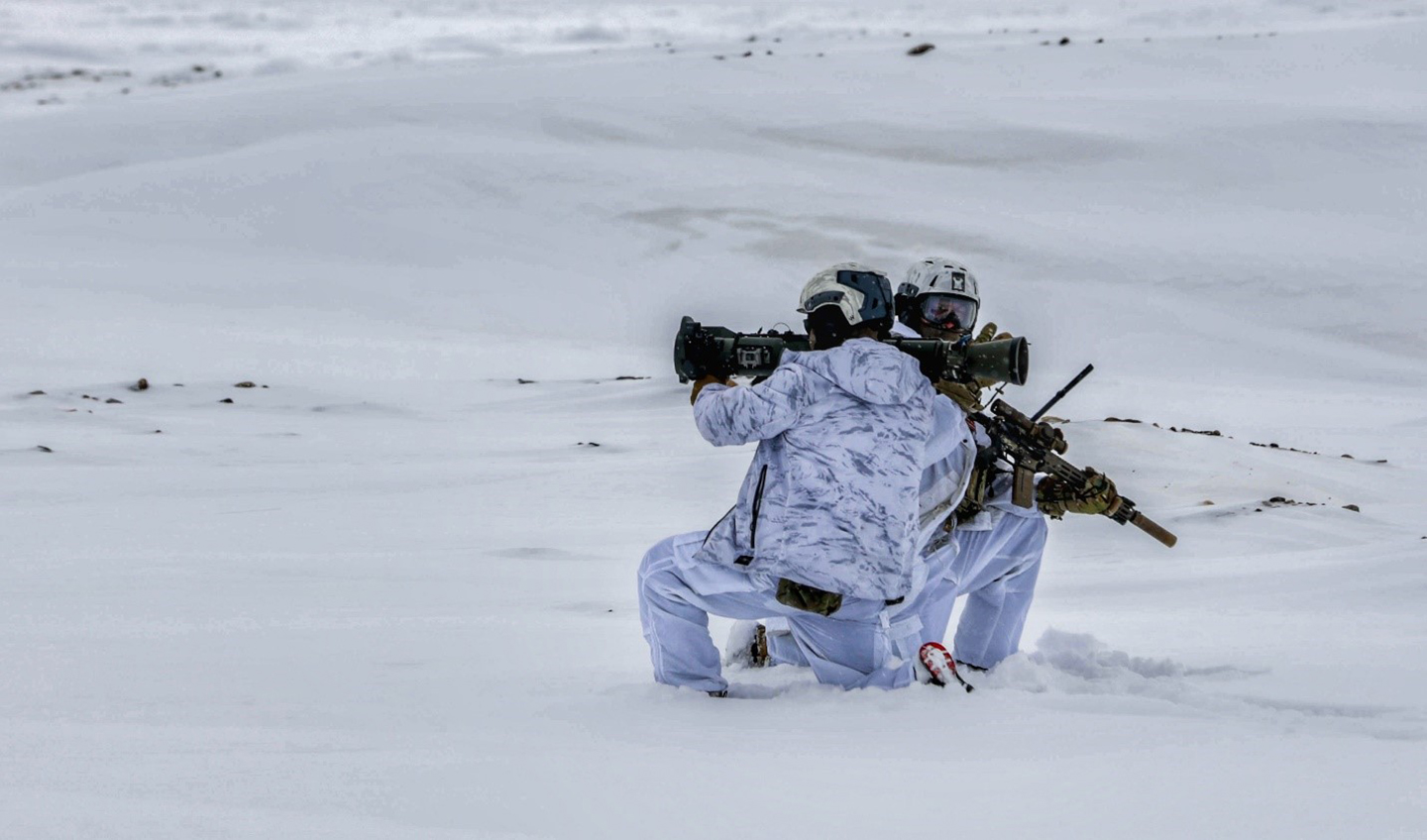West Coast-based Naval Special Warfare operators conduct high-altitude, cold weather mountaineering training during Arctic Edge 23, near Chickaloon, Alaska, in May 2023. Arctic Edge 23 provides an opportunity to demonstrate the ability to deploy Naval Special Warfare operators to the Arctic and develop skills for operating in austere environments.
THE WATCH STAFF
United States Northern Command (USNORTHCOM) and U.S. Special Operations Command North (SOCNORTH) are rapidly deploying and exercising Special Operations Forces in Alaska as part of Operation Polar Dagger. Operating across several remote locations in August 2023, U.S. Special Operations Forces will demonstrate joint force readiness and development, extreme cold-weather tactics as well as refinement of tactics, techniques and procedures for Arctic operations.
These activities enhance capabilities to defend U.S. interests in the Arctic while coordinating shared approaches with allies and partners as well as mitigating the risks of unintended escalation. Operation Polar Dagger provides SOCNORTH the opportunity to validate its Arctic Special Operations Forces capabilities in the defense of North America. It is part of a larger exercise series known as Operation Noble Defender, executed by North America Aerospace Command (NORAD) and USNORTHCOM to counter adversary threats.
“More than half of USNORTHCOM’s area of operations is in the Arctic, and campaigning in the Arctic includes military exercises to test and demonstrate capability, readiness and our will to operate,” Gen. Glen D. VanHerck, commander of North American Aerospace Defense Command (NORAD) and USNORTHCOM, said in a May 2 news release. “Executing joint-force operations under Arctic conditions exhibits credible deterrence, while showcasing robust U.S. defense capabilities.”
The Arctic has also become a priority for U.S. strategic competitors Russia and the People’s Republic of China (PRC). As global temperatures rise and sea ice melts, commercial shipping routes become navigable, allowing for easier access to the Arctic’s vast natural resources.
Iris Ferguson, U.S. deputy assistant under secretary of defense for Arctic and global resilience, pointed out to the newsletter Inside Defense on May 2, 2023, that, “given its strategic location, the Arctic is a potential avenue for expanded great power competition and aggression.”

“It’s the closest route … if you’re going to attack the homeland — over the pole and from the Arctic,” VanHerck said at the annual Association of the United States Army conference in October 2022, according to a story by the news website Breaking Defense.
The U.S. is an Arctic nation because of Alaska, which, geographically is “closer to China and Russia than to Hawaii or the U.S. mainland,” according to an April 29, 2022, story in Air & Space Forces Magazine.
VanHerck, in his remarks at the conference, also pointed out the threat that Moscow poses to the region.
The Russians, he said, have “already modernized their Arctic infrastructure … and they (are modernizing) their nuclear forces, more than a dozen installations or so across the Arctic, with the intent to change the norms and rules that have existed since the end of World War II.”
Joint military operations such as Noble Defender allow SOCNORTH and its components to demonstrate capabilities that are critical for integrated deterrence and globally integrated layered defense.
“Realistic, iterative operations like Noble Defender increase operational capability across the joint special-operations community to better prepare the force for competition and conflict in the High North,” said U.S. Army Col. Matthew Tucker, commander of Special Operations Command North, according to the USNORTHCOM news release. “This Arctic-focused operation provides us an opportunity to hone current capabilities and test the next-generation systems necessary to secure the homeland.”
The White House, in its Arctic Strategy released in 2022, emphasized that the U.S. has no intention of ceding the Arctic to competitors and putting North America at risk.
“We will deter threats to the U.S. homeland and our allies by enhancing the capabilities required to defend our interests in the Arctic, while coordinating shared approaches to security with allies and partners and mitigating risks of unintended escalation,” the strategy said. “We will exercise U.S. government presence in the Arctic region as required to protect the American people and defend our sovereign territory.”


Comments are closed.